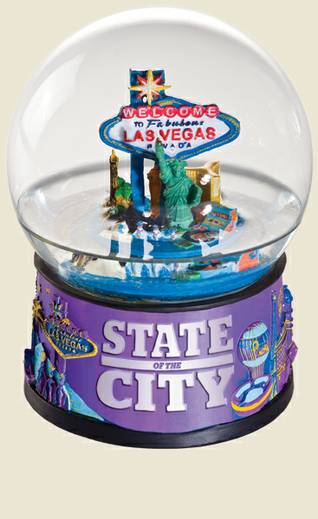Thursday, Jan. 21, 2010 | midnight
Technology, it seems, is doing what our postracial president has yet to. On a recent Thursday, inside the West Las Vegas Library computer lab, blacks, Hispanics, whites and Asians peacefully coexisted—updating their Facebook status, checking MySpace pages, e-mailing resumes, everyone united in techno-racial solidarity. Apparently, we can all get along when we need to use the Internet.
Assistant library branch manager Barbara Coleman notes the diversity, if only because, just a few years ago, there wasn’t much; most library patrons were black, reflecting the area’s primary racial makeup for most of the last 80 years.
“More people of other races {use the library], which is great,” says Coleman, whose archives on local black history was one of 20 across the nation studied by the special collections coordinator for the public library system in Washington, D.C. “But I wish more blacks would use the library and take advantage of the resources we have.”
That same day, a few hundred yards to the east, black faces dominated the crowd at the African-Americans for Harry Reid event at Nevada Partners. Ostensibly planned to boost Reid’s bona fides among blacks, the gathering also helped diffuse, at least for some, fallout from insensitive comments Reid made about President Obama’s complexion and diction in a new book, Game Change.
One day. Two events. Physically separated by .23 miles, but miles apart in terms of what they say about race relations in this Valley.
On the surface, West Las Vegas, with its mixture of blight and progress and racial isolation, may not look like ground zero for race relations, but it is. The rapid diversification within its boundaries is more instructive than, say, the growth of the commerce-driven Chinatown, whose diversity comes mostly from non-Asians with a hankering for Pacific Rim cuisine, or ever-expanding East Las Vegas, a self-reliant community similar to its counterpart in East LA.
Once purposely gerrymandered to ensure black representation on the Las Vegas City Council, West Las Vegas has gone from all black to predominantly black to majority black (three-fourths in 1991) to about half-black today. Recent years have seen a large influx of Hispanics, along with a trickle of whites and Asians, all drawn for varying reasons—affordable homes, abundance of subsidized housing, inexpensive office space, entrepreneurial opportunities. West Las Vegas now sits in the city’s most racially diverse district. Ward 5 is 37.2 percent white, 33.4 percent Hispanic and 22.7 percent black, according to city data.
With diversity comes both promise and peril.
Presiding over the ward is Ricki Barlow, a black man who has to juggle the demands of multiple constituencies, none more vocal than blacks in West Las Vegas, who proffer praise (for bringing a grocery store back to the area) as quickly as they shovel scorn (for allowing a high-rise on the site of the demolished, gang-infested Emerald Gardens housing complex).
Schools like West Prep and Booker Elementary are juggling multiple constituencies as well, catering to large numbers of black and Hispanic children. Mike Barton, who is white and in his fourth year as West Prep principal, has outlasted prognostications about his longevity and created a college preparatory environment. At Booker, principal Beverly Mathis has courted everyone from politicians to casino moguls to aid the school, whose students are among the poorest in the Valley.
Mario Berlanga, a Hispanic, owns the area’s most popular meat market, where you can buy soul-food staples like pigs’ feet, black-eyed peas and catfish. Several of the cooks churning out stone-ground grits and perfectly fried chicken wings in the kitchen at the black-owned Gritz Café are Hispanic. Next door, the Expertise Cosmetology Institute, the state’s only black-owned beauty school, began offering Spanish-language instruction for its growing number of Hispanic students.
Over on Martin Luther King, at Vegas Drive, a sign with the smiling visage of chubby-faced gas station owner Pat Ginn thanks West Las Vegas for allowing his family to run a business in the area for more than 30 years. Generations of West Las Vegans got their first taste of Chinese food from the station’s takeout kitchen. Before it burned down, H&H BarBQ on Washington and MLK was a favored soul-food spot for politicians like Reid. And West Las Vegas churches such as Second Baptist and Victory Missionary Baptist have long been required stops for politicians (running for both local and state posts) courting the black vote.
It’s not all been kinship and kumbayas. Tensions between blacks and Hispanics have flared into racially motivated crimes or crimes with racial overtones. Authorities note tensions between black and Hispanic youth (violence at Desert Pines, Canyon Springs and Western high schools) and gangs—Hispanic outfits are encroaching on the Westside.
That Reid can draw a crowd of the city’s most influential blacks is less a testament to racial progress than it is to political expedience. Each needs the other; Reid needs blacks to bolster his re-election chances and blacks need him as a passionate advocate for their cause.
More indicative of our progression or regression is how West Las Vegas wears its diversity. Can the area avoid the tensions that force racial allegiances among students, discourage experiencing other cultures and create racial no-trespassing zones such as those in certain neighborhoods in Los Angeles, New York and other cities? Can cultures, as opposed to individuals, peacefully coexist? Until such questions can be answered, the state of race relations in Las Vegas will always be frustratingly fluid, to be determined in the eyes (and minds) of the beholders.


Join the Discussion:
Check this out for a full explanation of our conversion to the LiveFyre commenting system and instructions on how to sign up for an account.
Full comments policy